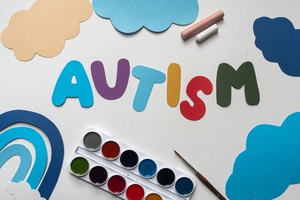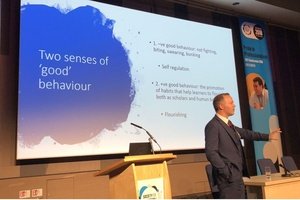It’s a little like searching for a leprechaun or a unicorn in some ways. We think we know what it looks like … but have we ever really seen it in real life? Are there any credible recorded sightings or at least a photo?
Of course, the big difference between leprechauns, unicorns and School Cultures is clear. One of them is most certainly real. The others? I’ll leave that in your court. My evidence for the claim that School Culture exists is in every roomful of school leaders I work with who tell me, without any hint of doubt, that it’s not only real but that it’s critical to the success of their school.
The conundrum begins to develop beyond the importance of culture and when we need to identify it. I’ve heard some incredibly articulate and smart leaders melt into vague “oh you know” descriptions that include words like vibe, feel and general atmosphere. Revealing is not only the difficulty about describing School Culture but the inconsistency in language we use in that pursuit.
And so, why don’t we all agree that there are multiple potential definitions of School Culture and then agree again that almost all of them could be argued to be right? Let’s also agree to end the pointless debate about what’s right when it comes to School Culture and instead adopt a definition that is useful and visible.
I like to describe School Culture in terms that educators are familiar with and to me, School Culture is just a collective noun - for behaviours. These are behaviours demonstrated by all three key stakeholder groups in a School Culture – your staff, your students and your parent/carer community.
Sometimes they contribute behaviours that we’re fond of and that we’d like to encourage or recognise. And sometimes they contribute behaviours that, at least for now, we’re tolerating.
And while it’s reasonable for most folk to categorise these behavioural contributions in these two ways, there’s a danger in deducing that the game of cultural leadership must just be to eliminate, or at least reduce or discourage, the tolerated behaviours. That’s just not realistic.
Even in the most functional relationships and relational systems, like schools, there are always behaviours that we’re tolerating. Consider your partner, your best friend or a treasured family member – and whether there’s at least a few things that this person perpetually brings to the connection table that you’d rather they didn’t.
I bet there are. And that’s one of your favourite people who you willingly choose to love and spend time with.
Comparing ourselves to unrealistic standards, such as behavioural elimination, in this way is constantly making School Leaders miserable and feeling like failures. It’s drawing us toward unhelpful assessments of our efforts and exasperated cries of “It’s not working. He’s still doing it!”
A little reality check on behavioural improvement. Problem behaviours rarely disappear in a miraculous instant of personal epiphany. In fact, any time we’re seeing any observable reduction in frequency and severity of tolerated behaviours, we should be celebrating for that’s how behavioural shifts in people manifest most commonly.
The culture of your school is most clearly viewed through the lens of three key drivers – language, conduct and mindset. And your culture can be made visible in:
- your commitments and plans for the contributions made by the staff for each driver.
- the case studies of impact and positive growth that emerge as outcomes from leaning collectively into good cultural processes.
So, does your school have a plan for the way that you speak as leaders of the culture? Does it have a plan for the way we leaders of culture conduct ourselves in the way we approach expected conflict, wrongdoing and even our pedagogy? And have we agreed collectively on some mindsets for working with young people that can be more useful for us than even true?
If you have, then you’re making culture visible. And if you’re finding yourself getting just a little vague and non-specific in your answers … that’s ok too. You’re actually in a big club. That said, it’s probably time that we did something about it.
Let’s start with my keynote presentation at the Corwin “Making Learning Visible” Conference on 12-13 September 2022.
















